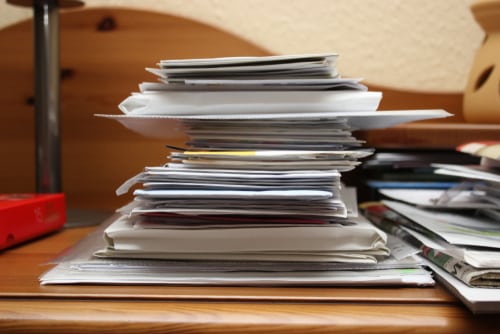For some people, getting and staying organized comes naturally. These are the people with the spotless desks, whose desk calendars are immaculate. At the other extreme are the people who don’t remember what the surfaces of their desks look like. In reality, most of us fall somewhere in between these extremes. Wherever we fall on the spectrum of organization, our time in school and in the workplace have led us to find systems that work for us and suit our own individual styles. However, embracing your personal way of doing things doesn’t mean you don’t have room for improvement. Here are five simple adjustments you can make in your routine that can make a big difference in your personal organization.
Abandon Multitasking
Multitasking seems to be the order of daily life, in and out of the workplace. You’re on the phone, typing a memo, running email in the background, while someone pokes their head into your office to ask a question. Some people thrive under this kind of fast pace, but most of us need a little more chance to focus. It’s okay not to multitask. Take time to schedule your day. Break large projects into smaller, achievable daily goals. Set aside time for emailing and phone calls. Use a calendar app or digital assistant to help if you need it. Giving yourself permission to focus on one thing at a time and creating a system to let you do this will bring you clearer thinking and improved productivity.
Set Time for Sorting
If you’re one of those people who tend to accumulate piles of paper, showers of sticky notes, a computer desktop scattered with files and documents, it’s easy to lose your sense of organization. Maybe every few weeks (give or take a month) you summon the wherewithal to get it all together, put everything in its right place, only to find the cycle repeating. One way to beat the clutter cycle is to set aside a few minutes at the end of every day to sort through the day’s files, emails, papers, and other materials. File these items or get rid of them as you see fit. The key is to establish a small routine to keep yourself honest.
One Touch, Take Action
A more radical way to beat clutter in your digital and physical workspace is to employ the “one-touch rule.” This strategy has its roots in home organization methods, but it also works for the office. For papers, files, and emails the approach is simple. You pick up an item and either trash it, file it, or take action on it right away. The idea behind this approach is that it forces you to avoid multitasking and focus on each piece of work as you come to it, and it works outside the bounds of a strictly scheduled day.
Get Face Time
If you’re the kind of person who ends up with an inbox full of long email threads, you may benefit from an approach that looks a little like the one-touch rule for email. Instead of handling issues via email, take a few minutes to talk to colleagues directly. If face-to-face interaction is limited, a phone call or chat will accomplish the same goal. Immediate interactive communication tends to resolve issues faster, saving you time in your day and keeping those messages from piling up around you.
Write It Down
Calendar apps and digital assistants are great tools for staying organized, but writing things down has tangible benefits. When you write, your brain engages in summarizing and processing information in ways that allow you to remember the content more easily. This connection between writing and memory is why you often find yourself writing down a grocery list you don’t need to look at you get to the supermarket. The same process can help you stay more organized at work.
Beyond these steps, sometimes it makes sense to pare down your workload by delegating responsibilities or outsourcing tasks. If records retrieval is one of those tasks, we’re here to help. We process hundreds of records retrieval requests every day. When we deliver files, we offer options to organize and summarize materials for ease of use, and we store your records on our secure server for easy retrieval for up to five years after you submit your request. Contact us today to learn more about how we can help you reach your organizational goals.
